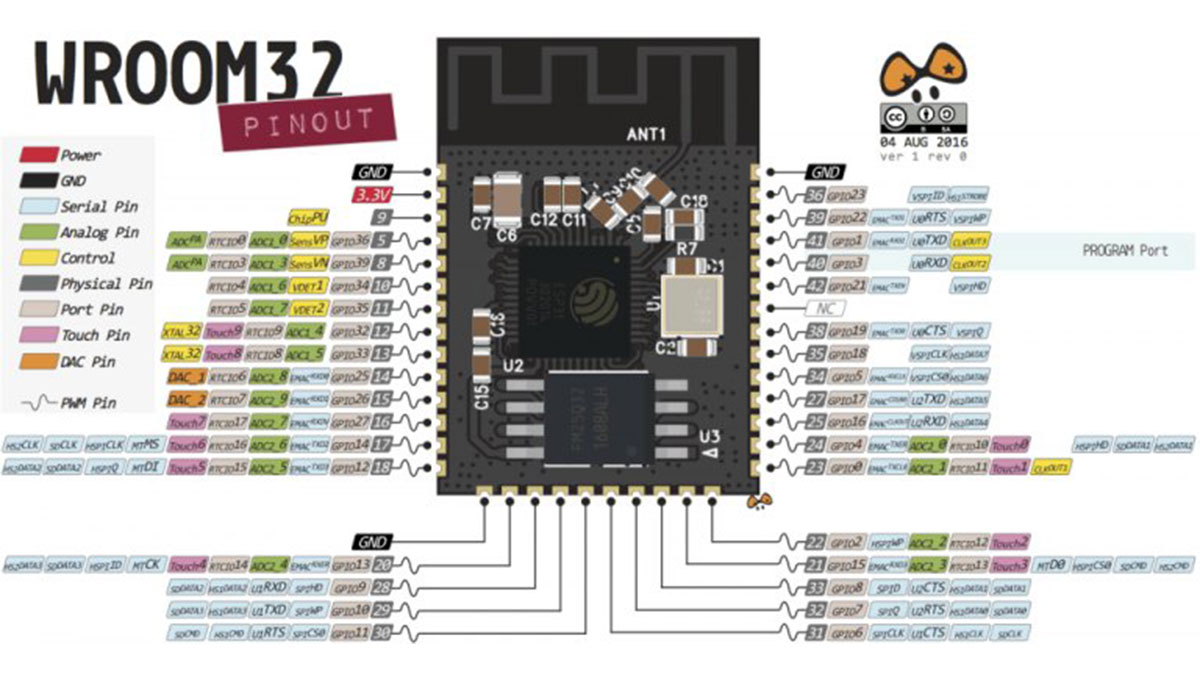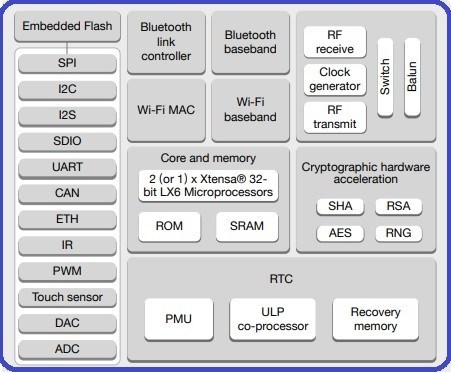Summary of ESP32-WROOM-32 (ESP-WROOM-32)
This article provides an overview of the ESP32 development board pinout, focusing on the ESP32 devkit, which uses the ESP-WROOM-32 module. It addresses common questions about GPIO pin usage, such as which pins serve as digital input/output or analog inputs, and which ones to avoid for safety. The guide also highlights the ESP32's features, including multiple ADCs, DACs, touch sensors, UART, I2C, I2S, CAN interfaces, PWM channels, and cryptographic hardware acceleration. Additionally, the article offers programming guidance using the Arduino IDE and explains the pin functionality of the 48-pin chip, noting not all pins are available on the devkit.
Parts used in the ESP32 Development Board Guide:
- ESP32 devkit (ESP-WROOM-32 module)
- Arduino IDE (for programming)
This guide describes the pinout of the ESP32 development board and concentrates on ESP32 devkit, in particular. Actually, the ESP32 devkit comprises of the ESP-WROOM-32 which actual implementation we shall be implementing throughout the two main modules. It is worth admitting that there are several different chip models of the ESP32 family in the market. The ESP32 devkit utilizes the ESP-WROOM-32 module. However, the functionality of every GPIO pin is consistent among all ESP32 development boards. I notice numerous individuals looking online for information about this development board. Numerous individuals are inquiring about the ways to utilize the GPIO pins. What GPIO pin is compatible for use as a digital input/output pin? What GPIO pin is suitable for use as an analog pin? What pin should be avoided when using this board to ensure safety. The answer to these questions will be given in this article. We will begin by explaining the pin of general input/output of ESP32 development board.

Introduction to ESP32 chip
Getting started with programming ESP32 using the Arduino IDE. I’ll demonstrate how to code an ESP32, with 19 pins on each side, to function as an Arduino. Furthermore, I will highlight the distinctions between this particular microcontroller and the Arduino. Therefore, along with showcasing ESP32 with the Arduino IDE, I will provide a hands-on demonstration of digital input and output.
you can check these articles on ESP32:
- Introduction to the ESP32 development board
- How to install ESP32 in Arduino IDE – step by step guide
you can check more information about this chip here.
Main features of ESP32
The main characteristics of ESP32 are as follows:
- There are 18 ADCs integrated onboard. Every ADC utilises SAR technology and has a resolution of 12 bits.
- Two DACs, which are digital to analog converters.
- It incorporates 9 touch sensors.
- For connectivity, it features two UART channels, two I2C interfaces, two I2S channels, and one CAN interface.
- There are 16 channels for pulse width modulation.
- It includes a hardware acceleration module for cryptographic algorithms such as RSA and AES.
Introduction ESP32 pinout
The image below illustrates the functions of each pin on this board. Just like I stated before, the chip that accompanies the board comes equipped with 48 GPIO pins. However, not all pins are usable on these development boards.


